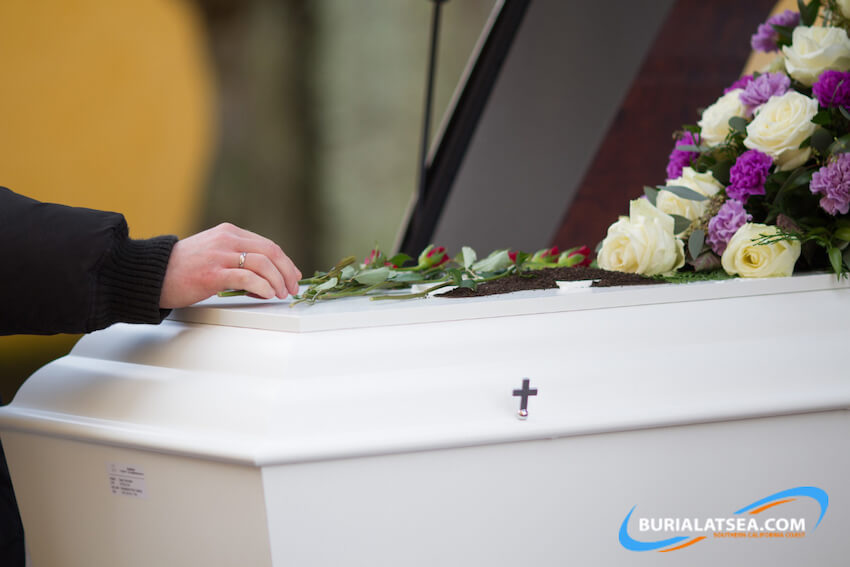Choosing the Perfect Resting Place: A Comprehensive Guide to Burial at Sea
- access_timeSeptember 27, 2023
- account_circleGary Jackson
The concept of burial at sea has deep historical and cultural significance. This unique and meaningful choice allows individuals and families to honor the memory of a loved one while returning them to the elements in a profound way. However, one of the most critical decisions when opting for a burial at sea is choosing the perfect resting place. In this comprehensive guide, we will delve into the various factors that influence this decision and help you make an informed choice that aligns with your preferences, the wishes of the departed, and regulatory considerations.
Understanding the Significance of Guide to Burial at Sea
Before embarking on the journey to select a suitable place for burial at sea, it’s essential to understand the significance of this choice. Burial at sea is more than just a final resting place; it’s a symbolic act that returns the departed to the ever-moving, boundless ocean. This understanding forms the foundation for the subsequent decision-making process.
Legal and Regulatory Considerations
Burial at sea is a regulated practice to ensure environmental and navigational safety. It is crucial to acquaint yourself with the relevant laws and regulations governing this act in your region. Factors to consider include:
Distance from the Shore: Regulations often stipulate minimum distances from the shore to protect public health and the environment.
Required Permits: Familiarize yourself with the permits and permissions required for a burial at sea. This typically involves coordination with government agencies, such as the U.S. Environmental Protection Agency (EPA) in the United States.
Environmental Impact: Learn about the potential environmental impact and the steps necessary to mitigate it. This includes the use of biodegradable materials for the casket or urn and the absence of toxic substances.
Type of Burial at Sea

The choice of burial at sea can encompass various forms, each with distinct considerations. Common types include:
Full-Body Burial: This involves placing the entire body in a casket and lowering it into the sea. It’s essential to choose a location with adequate depth and in compliance with local regulations.
Cremated Remains: Many opt for scattering the ashes at sea. The choice of location is critical for a meaningful ceremony.
Ashes in Biodegradable Urn: If you wish to have a structured ceremony, consider placing cremated remains in a biodegradable urn, which gradually releases the ashes into the ocean.
Choosing the Perfect Location
Ocean vs. Inland Waters: Decide whether you prefer an ocean burial or a burial in inland waters such as rivers, lakes, or reservoirs.
Scenic Beauty: Consider the natural beauty and serenity of the location. Many choose picturesque spots with stunning views.
Meaningful Connection: Opt for a location that holds personal significance to the departed or the family. This could be a place where they spent happy moments or had a deep connection.
Accessibility: Think about how easily family and friends can access the location. This is particularly important if you plan to hold a memorial ceremony.
Consultation with Experts
Burial at sea often involves specialized services. Consulting with experienced professionals in the field can provide invaluable insights into selecting the ideal resting place. These experts can offer guidance on legal requirements, ecological considerations, and suitable locations, ensuring a meaningful and respectful process.
We are based in San Pedro/Long Beach, and we have multiple California locations, including Dana Point, Long Beach, San Pedro, Redondo Beach, Los Angeles, and Catalina Island.
Safety Considerations
Safety is paramount during a burial at sea. Ensure that the chosen location is safe for the ceremonial activities and those involved in the process. Assess factors such as water currents, weather conditions, and accessibility for boats or vessels.
Memorial Ceremonies

A significant part of the burial at sea process is the memorial ceremony. Plan the ceremony in a way that honors the departed’s wishes and provides comfort to the family. This may include music, eulogies, and rituals that hold personal meaning.
Environmental Responsibility
Choosing a suitable place for burial at sea goes hand in hand with environmental responsibility. Ensure that the materials used, such as the casket or urn, are biodegradable and environmentally friendly. Follow best practices for minimizing the ecological impact of the ceremony.
Cultural and Religious Considerations
Respect for cultural and religious beliefs is crucial when selecting a burial at sea location. Some cultures and religions have specific guidelines or preferences regarding the process. Be sure to align your choices with these traditions and customs.
Documentation and Records
Maintain thorough documentation of the burial at sea process, including permits, certificates, and any other relevant paperwork. Keeping comprehensive records ensures compliance with regulations and peace of mind for all involved.
Talk to a Sea Funeral Specialist
Choosing a suitable place for burial at sea is a profound decision that involves a multitude of considerations. It is an act of love and respect, a final farewell to a loved one, and a connection to the eternal motion of the ocean. By understanding the significance, adhering to legal requirements, and making thoughtful choices, you can ensure a meaningful and environmentally responsible burial at sea that honors the departed’s memory and provides solace to those left behind.
Depending on your specific sea burial or sea scattering needs, the planning process can vary from a few hours to a couple of days. If you have any questions or require expert assistance for a full-body ocean burial or scattering at sea, reach out to Burial at Sea. Located in San Pedro, CA, this funeral company specializes in organizing sea burials and memorials along the Southern California coast.
For a complimentary consultation, don’t hesitate to contact our office by phone or through the contact form on our website.